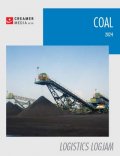The Covid-19 pandemic has pushed the world economy into its worst downturn in decades, resulting in the steepest decline in steel demand since the global financial crisis of 2008/9. The national lockdowns, falling demand and supply chain disruptions owing to the pandemic quickly spread to key steel-consuming sectors, which had significant declines in output. Of the main steel-using industries, automotive and mechanical machinery have been affected the most; however, many other sectors that are important for steel demand, such as energy, have also been severely affected.
Nonetheless, the World Steel Association’s Short Range Outlook for 2021 and 2022 indicates that the post-lockdown recovery in steel demand has been stronger than was earlier expected, with steel demand expected to recover to 1.87-billion tonnes in 2021, an increase of 5.80%.
Structural changes are expected to accompany the recovery process, with a shift in the demand structure of steel-using sectors, including automotive, owing to electric vehicle transitions and new urban mobility patterns; and in construction, with new patterns of urbanisation, changes in urban planning and building designs, as well as investment in the energy sector.
Overall recovery, however, remains fragile, owing to the waves of infections, continued physical distancing measures, elevated unemployment and weak confidence, as well as increasing concern about the timing of a demand recovery.
This content is only available to subscribers.
Forgot your password? Click here
Don't have any login details?
Free Trial Access



















